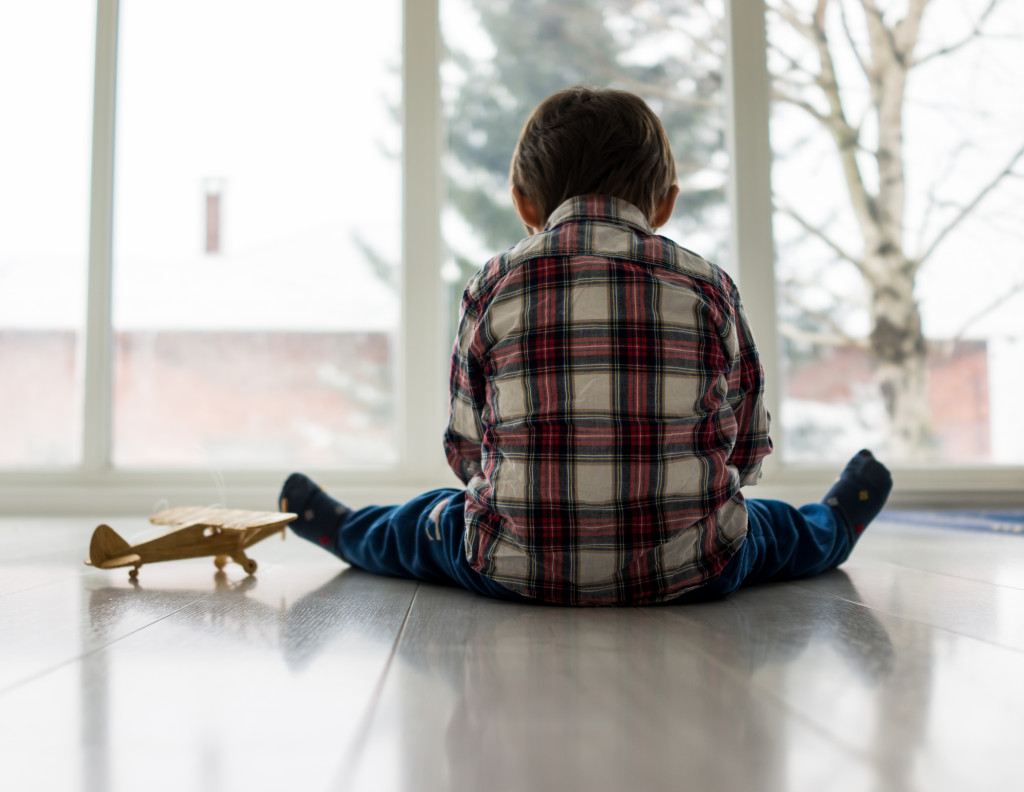Making a home safe for children is critically important. Unintentional injuries are the leading cause of death for American children ages 1-4 and the second leading cause of death for children ages 5-14.
There are many things parents can do to make their home safe for their kids, including installing childproofing devices, keeping harmful objects out of reach, and other kid-friendly changes. However, there is not much content on the internet discussing flooring.
The floors provide a safe foundation for kids, but it doesn’t mean that all types of flooring are created equal. Some materials may be more slippery, while others might not provide enough cushioning in a fall. There will be plenty of things to watch out for, making it necessary for parents to know the potential hazards that come with the usually reliable floors. Here are a few of them.
Slippery Areas
Water and floors spell danger for kids because they create a slick surface that can cause slips and falls. While dependable, floors can be vulnerable to minor flooding, especially in areas near water sources like sinks and tubs. The bathroom and kitchen are always a good start if you don’t know where to look for these spaces.
Bathrooms are one of the most common places for slips and falls because they have smooth, hard surfaces that can become wet quickly. Water from baths, showers, and even toilets can create puddles on the floor that can cause kids to slip. The kitchen is another place where water can start slippery hazards. Spills from cooking or cleaning can create puddles on the floor that make it easy for kids to lose their footing.
To make these areas safe for kids, you must perform slippery-proof changes. Non-slip mats are also a good idea in places where spills are likely to happen. Tiles are still the best materials in these areas because they provide good traction and are less likely to hold water.
Rougher Areas
While most people focus on the potential for slips and falls, other hazards come with flooring. Some materials can be too rough for kids, causing scrapes and cuts if they fall on them. Hardwood floors are an excellent example of this type of hazard.
While they may look beautiful, hardwood floors can be unforgiving if you hit them wrong. The same goes for laminate and tile flooring. These materials can all cause severe injuries if kids fall on them badly. So, choosing softer materials like carpets or rugs for these areas is essential.
Carpet is the best option for kids’ rooms and other high-traffic areas because it is soft and absorbent. It will cushion a fall and is less likely to cause scrapes and cuts. Rugs are also a good choice for these areas because they quickly move around to play.
Parents should also avoid placing furniture on top of hardwood floors or any other type of flooring that can cause injuries.
Outdoor Areas

While most people think of indoor hazards regarding kids and flooring, some dangers come with outdoor areas. These areas are usually concrete, which can get hot in the summer sun. This heat can cause burns if kids walk on them barefoot.
To keep kids safe from these injuries, you might have to invest in flooring materials that won’t get too hot in the sun. Materials like rubber or synthetic turf are good choices because they don’t retain heat. It’s also essential to ensure that any outdoor areas are well-ventilated to avoid trapping heat.
Static Electricity
Another hazard that comes with some types of flooring is static electricity. This hazard can cause shocks and even fires if it does not get addressed.
Static electricity is most common in homes with carpeted floors. The problem occurs when there is a build-up of static electricity in the carpet. This can happen when kids walk on the carpet or move furniture around.
The build-up of static electricity can cause shocks and even fires if not discharged properly. To avoid these hazards, you should invest in a carpet dehumidifier. This will help to remove the static electricity from the carpet and make it safe for kids to be around.
If your floors still have static, you can also add a conducive epoxy flooring coating to the surface. This coating will help dissipate static electricity and make your floors safe for kids.
You should also avoid using any cleaning solution that contains alcohol. These solutions can increase the static electricity on your floors and make the hazard worse.
Final Thoughts
Making your home safe for kids is essential. While most homes are already child-friendly, flooring has potential hazards. By taking the time to identify and address these hazards, you can make your home a haven for your kids.




